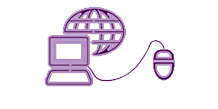After a short hiatus we will be returning to more consistent weekly blog posts on genealogical concepts. I am happy so say once again, hello friends and welcome back to the blog! During our time here we have covered many different topics concerning genealogy, sources, techniques, and tips. Much of our time has been spent looking into how to best preform genealogical research. Doing genealogical research is important, but I would like to focus our attention back upon research organization techniques. Having the right organization techniques are crucial to simplifying your process. Today we will be discussing a portion of this important aspect genealogical work, the secrets and benefits of scanning.
The first question you may ask me is what does scanning have to do with genealogy? why should I scan my documents and photos? The answer to this question is nuanced and depends upon you as the researcher. You might discover that how you do your family research might differ than me. For me I find that scanning has made my research easier. However, perhaps you like things on paper and have a consistent and reliable process that helps you as you dive in and organize information. If that is the case, you could consider the move to digital or continue in your confidence of relying upon your traditional methods. As you research this week note your methodologies, what works well, and what does not. After consulting this list, brainstorm whether or not it may be beneficial about scanning that may reduce your current struggles. After you have determined whether or not you would like to proceed with scanning than you can move onto creating your scanning goals and picking the best machine for the job.
Your scanning machine needs may differ based upon your project format. For example, you could be scanning to store or scanning to compile into a scrapbook. These different formats will determine what features you will need to keep an eye out for. Consider the size of your document, your physical workspace, what might work best with your computer, and the condition of the items you will be scanning. You may want to consider a professional service if the cost for correct machinery or time is too much for you.
There are several different types of scanners you may encounter if you choose to continue to purchase your own machinery. There are flatbed scanners which features a large flat glass base (I prefer the Epson machines), wand scanners, flip-pal scanners, book scanners, smartphones, and copy-machines. Take a look at each of the machines bearing in mind your project and scanning needs as you review each machines special features. Some features I would consider baseline include making sure it has optical resolution, 48 bit color scale or 16 bit grayscale, a good image sensor, and to consider getting a scanner that comes with photo editing software.
Lastly, I will leave you with some basic tips about scanning. If you have never scanned anything before these are good tips to keep in mind. Keep your scanner glass clean. Use a non-abrasive cloth for cleaning if necessary. Practice placing the photo or document on the glass without leaving fingerprint smudges. Make sure that your photo is straight, right-side up and center. Finally, check your settings. Take special care in looking over color, resolution, and file type before you scan.
I hope that this blog post has inspired you to take a closer look into scanning and how it may be beneficial for your genealogical research. It certainly has mine! For my current processes and projects, I am using Epson flatbed scanner V500 also my IPhone and I find them extremely helpful! If you have any questions that have not been answered about scanning and all it entails via this post, feel free to check out my webinars where I go in-depth and cover other scanning tips, tricks, and details. If you are having problems with your scanning projects or are unsure with what choice to make as you endeavor to find your perfect scanner, feel free to reach out using the contact information above. Thanks for reading and happy researching!
“The Genealogy Granny”
Winona I Laird : https://genealogyeducationcenter.com



